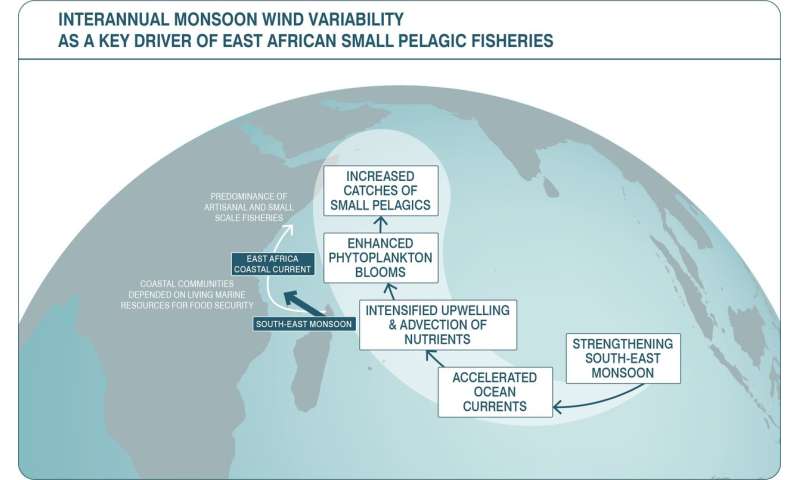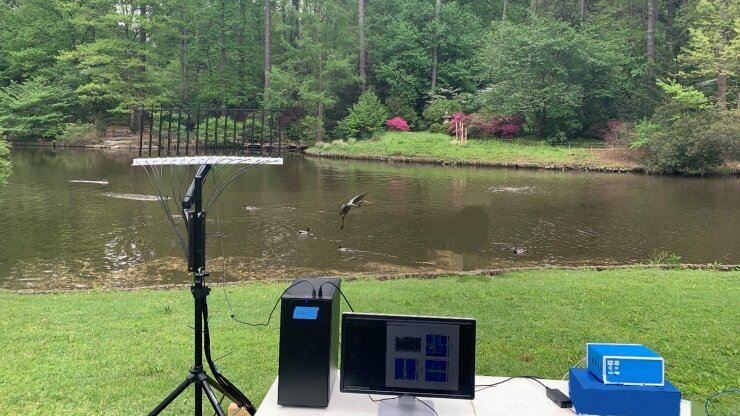#Monsoons help enhance the yield in East African fisheries
“#Monsoons help enhance the yield in East African fisheries”

New research reveals the importance of the Monsoon in how abundant small pelagic fish are in East Africa.
Led by scientists at the National Oceanography Centre (NOC) and published today in the journal Nature Scientific Reports, this study used observations of chlorophyll-a taken from satellites, as well as measurements taken in the field and an ocean model to investigate the environmental processes driving the yield of small pelagic fish. These fish, which include herring, shads and anchovies, play an important role in the food security of the coastal population. Chlorophyll-a is used as an indicator of the presence of tiny marine plants, called phytoplankton, which form the base of the food chain and a food source for fish.
Lead author, Fatma Jebri from the NOC said “Small pelagic fisheries provide food security, livelihood support and economic stability for East African coastal communities. So, by helping to enhance understanding around what drives the yield in these fisheries, the findings of this research could inform food resource planning there.”
An analysis of the observations taken as part of this study and the model outputs reveals that winds during the Northeast Monsoon drive a coastal upwelling which brings nutrients up to the surface along the East African coast. Phytoplankton are able to feed on these nutrients and bloom, which in turn provides an enhanced source of food for fish, leading to a greater yield in fisheries.
Although this research showed that phytoplankton biomass can be even larger when the wind flows in the opposite direction, during the Southeast Monsoon. In these periods wind accelerates an ocean current flowing along the Tanzanian coast, driving a dynamic uplift upwelling so that nutrient-rich waters are brought to the surface. Advection is a further process providing an additional source of nutrients along the Tanzanian coast during the Southeast monsoon.
For years unaffected by strongEl-Niño / La-Niña events, the Southeast monsoon wind strength over the south tropical Indian Ocean is the main driver of year-to-year variability in fishery yield.
Small pelagic fish catches are notoriously difficult to predict, as these fish are renowned for strong variability and the instability of its stocks. However, the link with the strength of the monsoon highlighted by this research paper will allow planners to anticipate good and bad years and help the coastal population dependent on this resource to cope with the periods of poor catches.
More information:
Fatma Jebri et al. Interannual monsoon wind variability as a key driver of East African small pelagic fisheries, Scientific Reports (2020). DOI: 10.1038/s41598-020-70275-9
Monsoons help enhance the yield in East African fisheries (2020, August 6)
retrieved 6 August 2020
from https://phys.org/news/2020-08-monsoons-yield-east-african-fisheries.html
This document is subject to copyright. Apart from any fair dealing for the purpose of private study or research, no
part may be reproduced without the written permission. The content is provided for information purposes only.
If you want to read more Like this articles, you can visit our Science category.
if you want to watch Movies or Tv Shows go to Dizi.BuradaBiliyorum.Com for forums sites go to Forum.BuradaBiliyorum.Com




